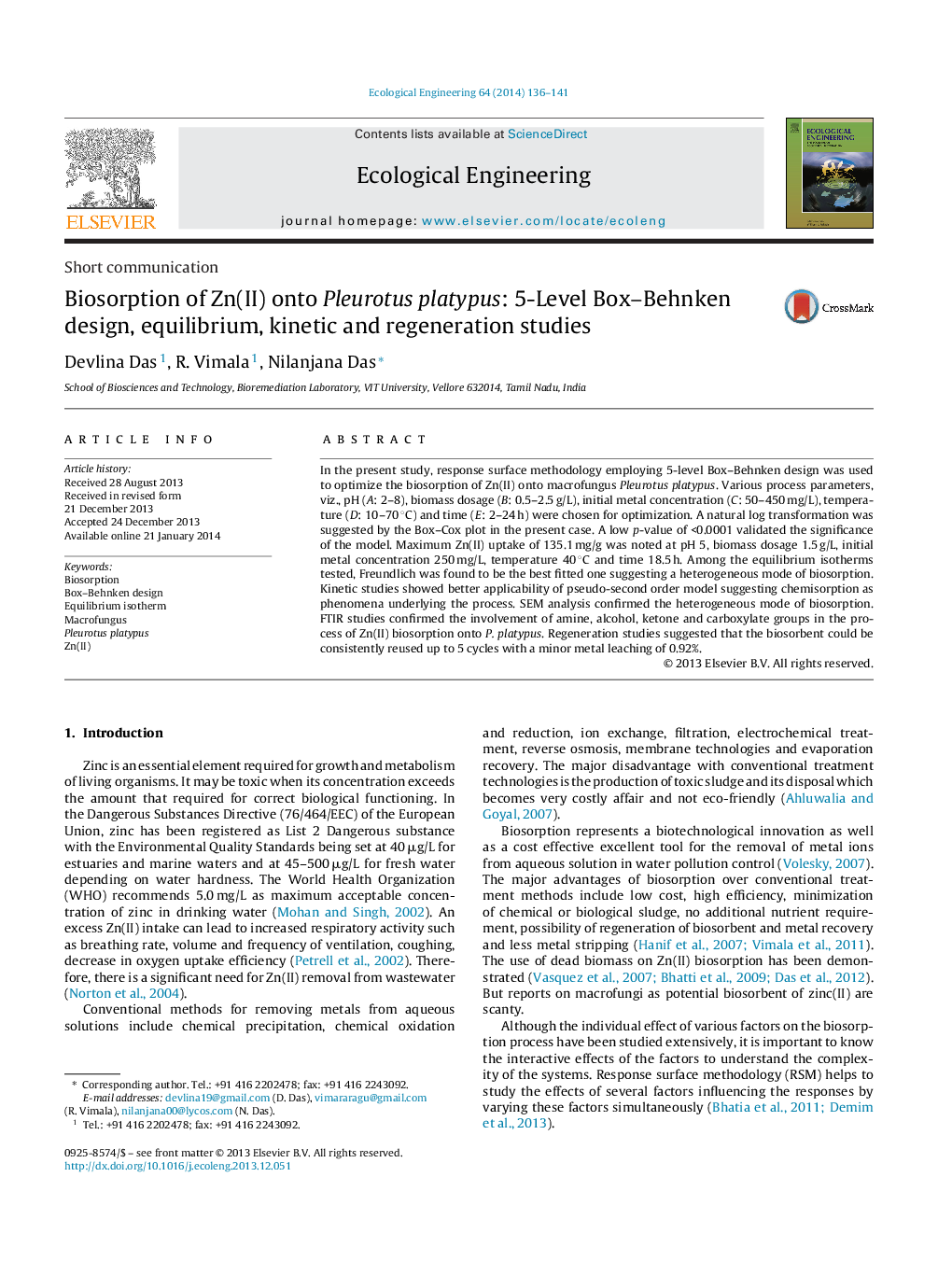| کد مقاله | کد نشریه | سال انتشار | مقاله انگلیسی | نسخه تمام متن |
|---|---|---|---|---|
| 4389572 | 1618035 | 2014 | 6 صفحه PDF | دانلود رایگان |

• Presence of high amount of Zn(II) ions in wastewater is acutely toxic.
• Operating parameters and their interactions on Zn(II) biosorption are tested.
• The suitability of Box–Behnken model as an efficient method has been assessed.
• Various equilibrium and kinetic models were tested.
• Reusability of the biosorbent was tested.
In the present study, response surface methodology employing 5-level Box–Behnken design was used to optimize the biosorption of Zn(II) onto macrofungus Pleurotus platypus. Various process parameters, viz., pH (A: 2–8), biomass dosage (B: 0.5–2.5 g/L), initial metal concentration (C: 50–450 mg/L), temperature (D: 10–70 °C) and time (E: 2–24 h) were chosen for optimization. A natural log transformation was suggested by the Box–Cox plot in the present case. A low p-value of <0.0001 validated the significance of the model. Maximum Zn(II) uptake of 135.1 mg/g was noted at pH 5, biomass dosage 1.5 g/L, initial metal concentration 250 mg/L, temperature 40 °C and time 18.5 h. Among the equilibrium isotherms tested, Freundlich was found to be the best fitted one suggesting a heterogeneous mode of biosorption. Kinetic studies showed better applicability of pseudo-second order model suggesting chemisorption as phenomena underlying the process. SEM analysis confirmed the heterogeneous mode of biosorption. FTIR studies confirmed the involvement of amine, alcohol, ketone and carboxylate groups in the process of Zn(II) biosorption onto P. platypus. Regeneration studies suggested that the biosorbent could be consistently reused up to 5 cycles with a minor metal leaching of 0.92%.
Journal: Ecological Engineering - Volume 64, March 2014, Pages 136–141